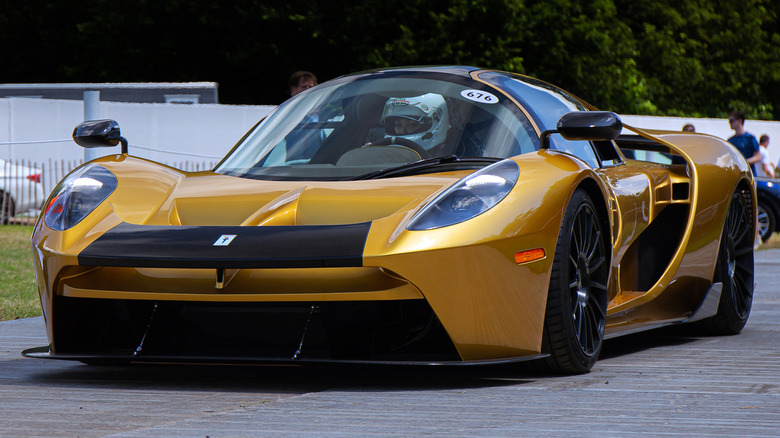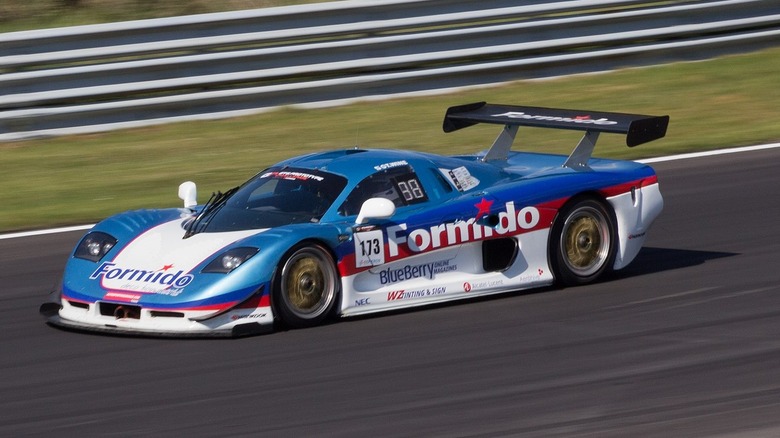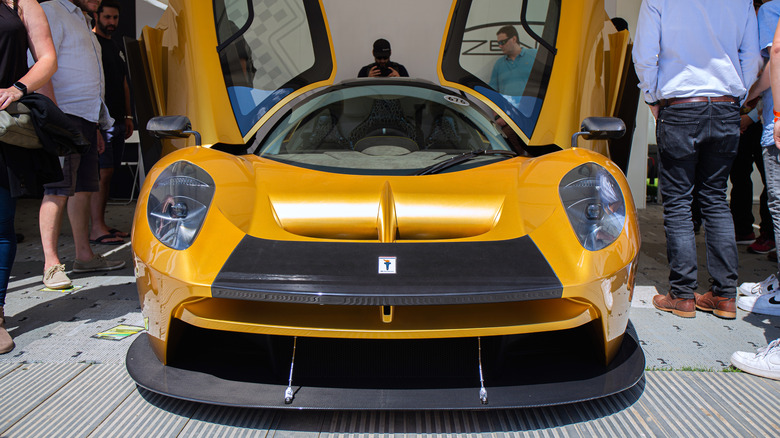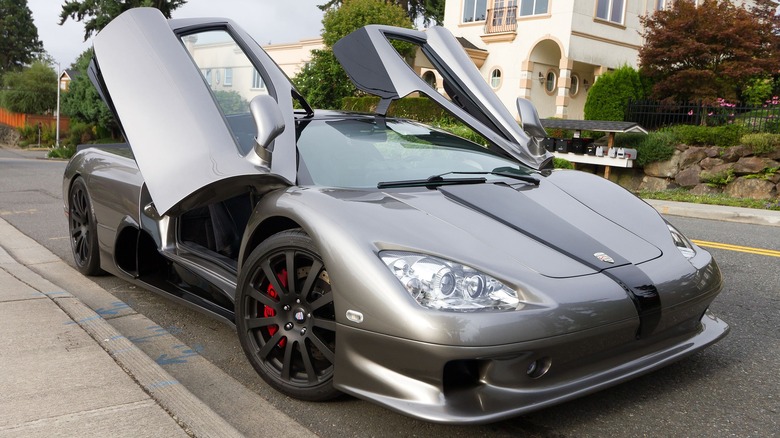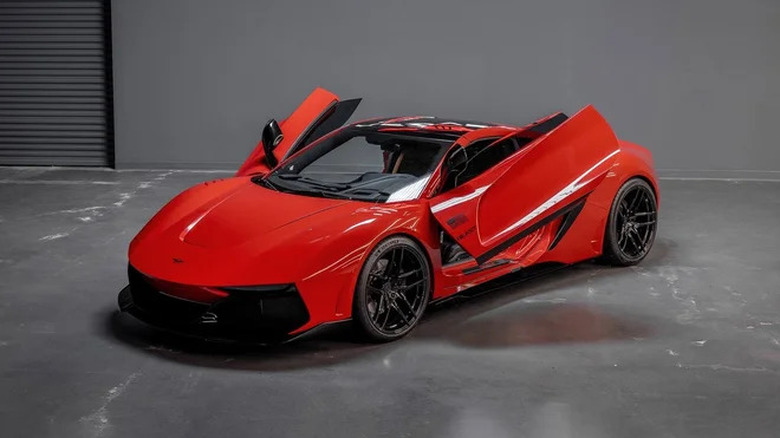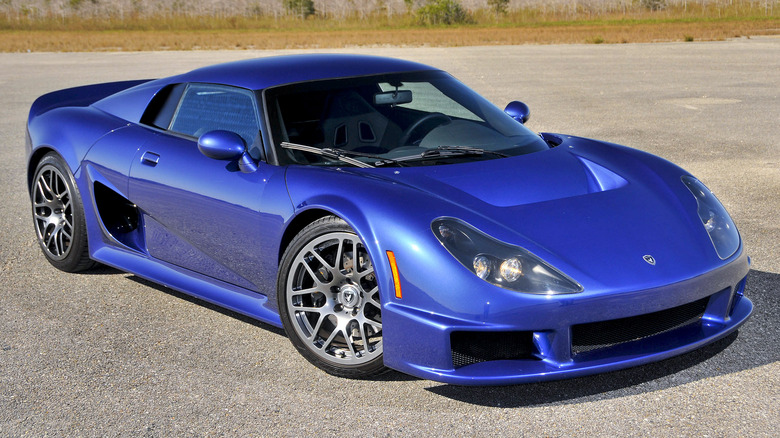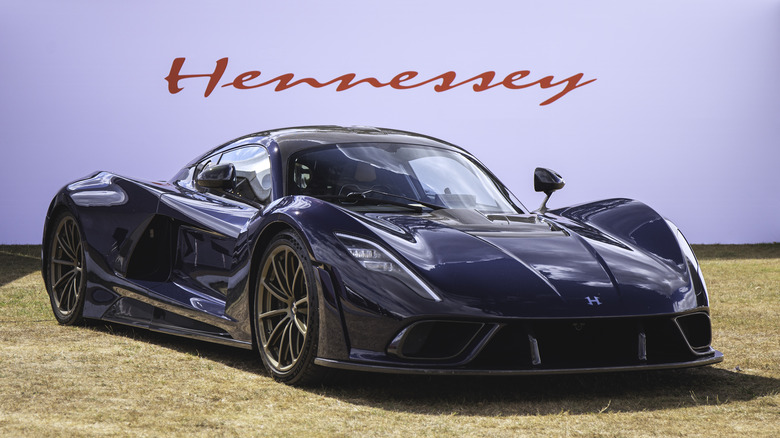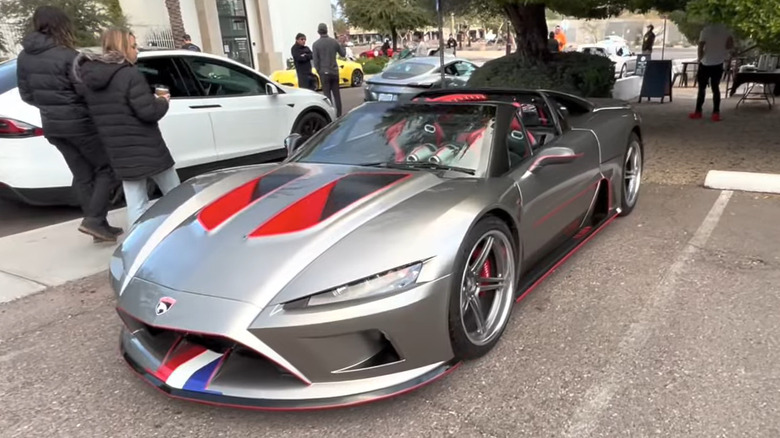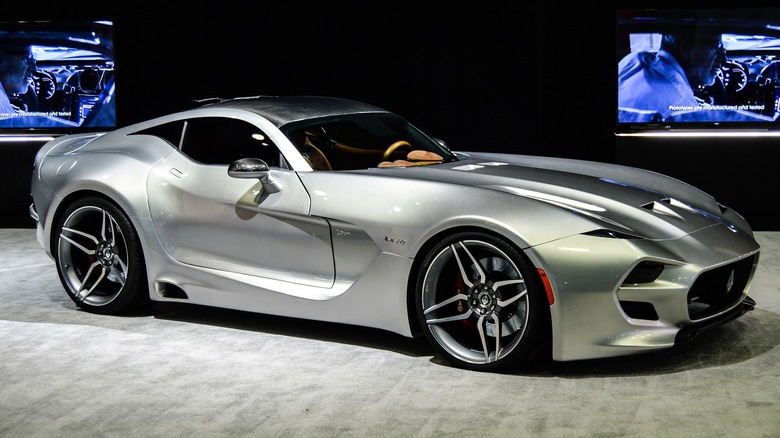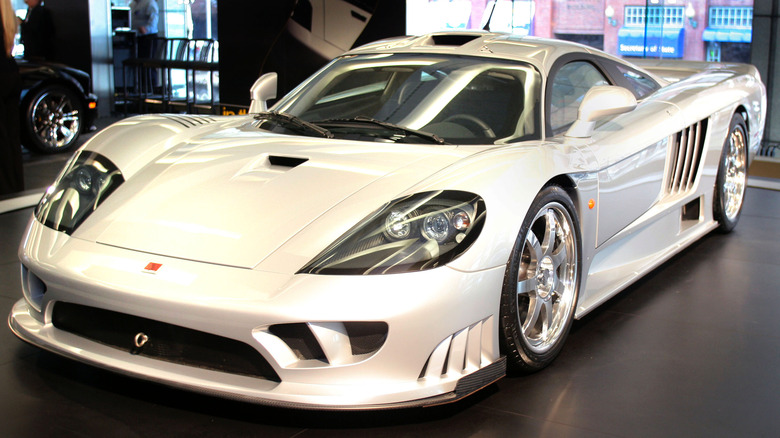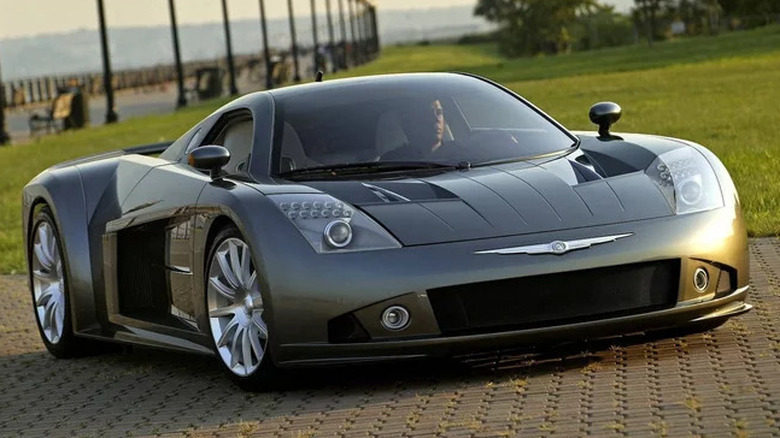10 American Supercars That Deserve More Recognition
Ask any enthusiast to name a country famous for its supercars and a few common answers will always crop up. Italy is perhaps the most obvious answer, since it's home to many of the world's most recognizable brands, from classic marques like Ferrari to newer players like Pagani. The UK is another top candidate, being the traditional home of industry stalwarts like Aston Martin and McLaren, while the likes of Porsche and Mercedes-AMG ensure that Germany is also well-represented in the supercar world.
Despite boasting one of the world's largest auto industries, the U.S. is often considered a smaller player in supercar circles, although that reputation arguably isn't justified. In fact, American companies have produced a slew of excellent supercars over the past few decades, even if many of the best have been largely overlooked. From race-bred track day specials to Bugatti-beating speed record breakers, we've rounded up a selection of American supercars that we think deserve more recognition than they get.
Mosler MT900
There's no single answer to what constitutes a successful supercar. Some might argue that it's raw performance that matters the most, but others would counter that image and customer demand are the best indicators of success. The Mosler MT900 certainly ticked all the right boxes on the performance front, both on the track and on the road. It was so successful in the races it entered that it was actually banned from some races, or otherwise penalized so heavily it could no longer compete. Before it was exiled, it racked up a string of wins, including at the 24 Hours of Daytona.
However, the problem with the MT900 was that its maker never really managed to make its image appealing to buyers. Mosler's previous cars were notoriously ugly, focusing on racing prowess over aesthetics. Although the MT900 was a significant improvement, it looked a little too much like a kit car for its own good. Some buyers reportedly even assumed it was a kit, especially since Mosler insisted on using parts-bin components like Corvette taillights to keep production costs down. Except, this was a factory-built supercar with a list price of up to $700,000.
In the end, only 60 examples of the car were sold before Mosler ran out of cash and ceased trading in 2012. The lackluster reception to the car ensured that it was forgotten by most enthusiasts, which is unfair, given its racing pedigree.
[Featured image by Bobo Boom via Wikimedia Commons | Cropped and scaled | CC BY 2.0]
SCG 004
SCG, also known as Scuderia Cameron Glickenhaus, is still a lesser-known name in the supercar world. In fact, there's a good chance that many enthusiasts will have never heard of the brand. However, SCG is responsible for a number of the most promising road and racing projects currently in development in the United States. The SCG 004 is positioned as its flagship supercar, with a mid-mounted V8 engine making around 650 horsepower. It boasts a central driving position, taking inspiration from the McLaren F1, and a six-speed manual transmission.
Glickenhaus has already proved its 007 race car can compete with the big players on the track, taking fourth place overall in the 2021 running of the 24 Hours of Le Mans and achieving a podium finish at the event in 2022. The 004 itself is racing-derived, being a refined version of the outfit's Nurburgring endurance racers.
Sales figures for the 004 have not been publicly disclosed, but founder Jim Glickenhaus told MotorSport, "We have a certain capacity [for the car] and we have sales up to that amount." Glickenhaus recently shared photos on social media of a 004 prototype undergoing durability testing to ensure it could withstand the stresses of 100,000 miles on the road, and confirmed in a comment on the post that build slots are set to be available for 2025.
SSC Ultimate Aero
Much like the Mosler MT900 it rivaled, the SSC Ultimate Aero boasted class-leading raw performance, but its popularity was hobbled by its appearance and brand image. In the case of SSC, this was perhaps more accurately described as a lack of a brand image — the company had been around for less than a decade by the time the Ultimate Aero was launched, and had no prior track record of producing cars. Nonetheless, SSC's first model proved it was far from vaporware, setting a Guinness World Records-certified speed record of 257.41 mph to become the world's fastest production car.
The car it beat was none other than the Bugatti Veyron, but unlike the Veyron, SSC had no multi-billion-dollar conglomerate to turn to for marketing or design. The Ultimate Aero looked dated when it debuted, and according to Autocar, suffered from "build quality on a par with a 1980s TVR and all the luxury of a small Malaysian hatchback." Not exactly the qualities buyers were looking for in a machine that cost at least $650,000.
Still, 24 examples of the car were reportedly sold before the Ultimate Aero was retired. As flawed as it might have been, it's hard to argue with the car's world-beating performance — despite having fewer resources, SSC beat Bugatti at its own game, even if the VW-backed hypercar brand would later reclaim the record with the Veyron Super Sport.
[Featured image by Nate Hawbaker via Wikimedia Commons | Cropped and scaled | CC0 1.0]
Rezvani Beast
The Rezvani Beast has been in production for nearly a decade, but a new version of the supercar was unveiled in February 2024. The original 2015 car used the platform of the Ariel Atom, while an updated version in 2018 was based on the Lotus Elise. The latest iteration keeps things more American than ever, with the 2024 Beast using a C8 Corvette as its base. The car's twin-turbocharged mid-mounted V8 engine churns out 1,000 horsepower, giving the Beast a reported 0-60 mph time of 2.5 seconds.
The freshly unveiled supercar is far from a bargain, with a starting price of $485,000. However, with a production cap of 20 units, it's safe to say Rezvani owners are unlikely to see anyone else driving the same car, no matter where they are. To make the Beast even more unique, Rezvani also offers a range of James Bond-inspired extras, fitting everything from an intercom system to thief-proof electric shock door handles.
Rossion Q1
Built on the bones of the Noble M400, the Rossion Q1 straddled the line between high-end kit car and cut-price supercar. In its early days, it was definitely more the former — Noble's American importer bought out the rights to the old M400 after it ended production, reworked the bodyshell, and sold the car in kit form. Alongside its new look, the firm's engineers also upgraded and replaced much of the suspension to ensure it was more comfortable to drive than the rather rudimentary M400.
At its launch in 2007, buying a Q1 meant sourcing an engine and putting it together yourself — or paying someone to do it for you. At launch, Rossion's recommended engine was a V6 producing 450 horsepower, although owners were free to fit more powerful mills should they wish to. By 2013, however, Rossion had expanded its manufacturing facilities to provide turn-key cars, transforming it from a kit car maker into a fully-fledged boutique supercar outfit.
The company reportedly built up to 48 cars per year and employed 70 people at its peak, although the total production figures for the Q1 remain unknown. Rossion ended production of the car in 2018, although used examples continue to occasionally crop up on auction sites today.
Hennessey Venom F5
The Venom F5 is the latest and greatest halo car to emerge from tuning-outfit-turned-hypercar-maker Hennessey, and it boasts some truly impressive performance figures. Its twin-turbo V8 engine churns out 1,817 horsepower, enough to propel the car to a claimed top speed of over 300 mph. It boasts a curb weight of 2,998 pounds, making it lighter than similarly powerful cars from the likes of Koenigsegg and Bugatti. Its production numbers are also strictly limited — just 24 examples of the coupe F5 were available, with similarly small production caps for the roadster and the track-oriented F5 Revolution.
Hennessey is still reportedly working on its bid to claim the official title of the world's fastest production car, with a run proposed later in 2024. The car's theoretical top speed has been calculated to be 328 mph, but the team are said to be aiming for a target of anywhere over 300 mph average in two directions. Like many other hypercars vying for the production car speed crown, the biggest problem the brand has is finding a suitable location to test the Venom F5 — most test tracks and runways simply aren't long or smooth enough. It remains to be seen whether the Hennessey can set the official world record, but even if it doesn't, the Venom F5 remains undoubtedly one of the fastest cars in the world.
Falcon F7
Falcon is a small Michigan-based supercar maker that many enthusiasts will have never heard of, despite the fact that its sole offering has been on sale for more than a decade. It's extremely rare even by supercar standards, with only seven examples reportedly produced as of 2021. The car featured a Lingenfelter-modified GM LS V8 engine that produces 620 horsepower as standard, but that figure can be optionally upgraded to up to 1,100 horsepower.
That power is transferred to the ground through a six-speed manual transmission. Weight is also kept to a minimum thanks to a mix of carbon fiber and Kevlar chassis and body panels, with the car clocking in at 2,785 pounds. For context, that's lighter than a Subaru BRZ — and the F7 has over 1,000 horsepower on offer. Pricing for the car reportedly starts from around $250,000, although opting for the most powerful iteration will add a significant premium to that total.
VLF Force 1 V10
Building a supercar from the ground up is extremely expensive, and so some startup supercar makers opt instead to design a car based on an existing production model. VLF, a short-lived startup co-founded by ex-GM executive Bob Lutz, did just that, basing its first and only supercar on the platform of the Dodge Viper. It shared its chassis and most of its oily bits with the donor car, but boasted all-new styling courtesy of designer Henrik Fisker. Its engine was also carried over, albeit with a power boost: The Force 1 V10 makes 745 horsepower, a bump of 100 horsepower over the stock Viper.
Originally, VLF planned to make a run of 50 units, but production eventually ended after just five cars had been built. Four of those were coupes, and one was a roadster. The car could reportedly reach a top speed of 218 mph and boasted a 0-60 mph time under three seconds, but ultimately, those stats weren't enough to sway many buyers. Perhaps this can be put down to the Force 1 V10's Viper bones — finished cars were reportedly even still titled as Dodges rather than under VLF's own brand. It might have been a sales failure, but Henrik Fisker's reinterpretation of the Viper deserves more recognition as one of the few coachbuilt American supercars that actually made it to production, albeit in limited numbers.
[Featured image by Yahya S via Wikimedia Commons | Cropped and scaled | CC BY 2.0]
Saleen S7
Saleen might be most famous for its modification of Ford Mustangs, but its S7 supercar is arguably its greatest creation to date. The S7 was unveiled in 2000 and was the brand's first car built from the ground up. It featured a uniquely designed 7.0L V8 engine which made 550 horsepower in naturally aspirated form or 750 horsepower with the optional twin turbos fitted. Production of the car ended in 2009, although plans were unveiled in 2017 for an updated 1,500-horsepower version called the S7 Le Mans.
The S7 boasts performance figures that are still impressive today: a claimed top speed of 250 mph for top-spec variants, a 0-60 mph time of less than three seconds, and a quarter-mile time somewhere in the ten-second range. Those figures rivaled the fastest offerings from the likes of Ferrari and Porsche, as well as the Ford GT. The latter car, incidentally, was also built by Saleen under contract alongside the S7.
Chrysler ME Four-Twelve
Although it never made it to production, the Chrysler ME Four-Twelve very nearly changed the history of its maker upon its unveiling. The original concept was launched in 2004 and featured a mid-mounted Mercedes-Benz V12 engine making 850 horsepower. The same engine was also found in the Pagani Zonda of the same era, but the Chrysler's four turbos ensured that their concept was even more powerful than the Italian exotic.
According to Chrysler, the car boasted a sub-three-second 0-60 mph time and a theoretical top speed of 248 mph. Two examples of the ME Four-Twelve were reportedly made, one as a design study with a lower power output, and one with the full 850 horses on tap. Select magazines, including Autoweek, were given the chance to drive the car in 2004, with bosses telling the outlet at the time that a production run of up to 1,000 units was being considered.
Chrysler's CEO, however, also told Autoweek that he would abandon the project if it couldn't be made profitable. Unfortunately, it seems that was the case, as a mix of financial constraints and internal wrangling at DaimlerChrysler eventually left the project shelved. It's easy to wonder how much pushing ahead with the production of a world-class halo car would have altered Chrysler's fate — would it have been seen as just a costly vanity project, or a much-needed way to generate interest in a dying brand? Unfortunately, enthusiasts will never know.
